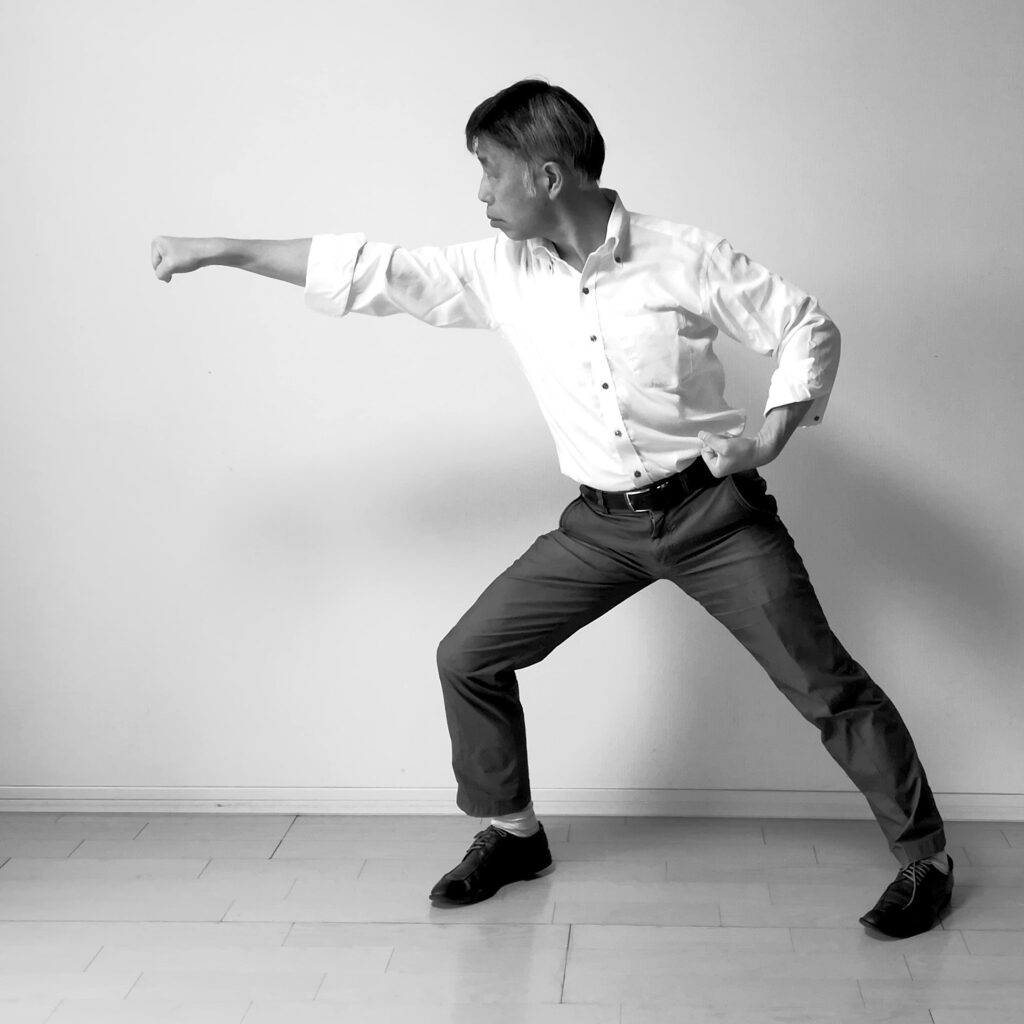
“An(按)” in Tai Chi is not just a push.
“An(按)” is Tai Chi’s fourth motion and it means a hit.
Tai Chi’s fourth motion produces a powerful impulse by using spiral force (纏絲勁) in the lower body.
Let’s explain “An(按)”, Tai Chi’s fourth motion, in bow stance position.
A powerful punch can be understood as a fast and heavy punch.
Theoretically, first, the center of gravity moves quickly to slide in toward the opponent.
This is the translational motion of the pelvis explained in the previous blog.
When weight is transferred to the front foot more than 50%, the inertia of the lower body is getting to stop.
The energy of that stop accelerates the upper body movement,
Then, by gripping the fist, the weight will be focused and concentrated on the point of striking.
The center that controls this movement is the sacrum,
Tai Chi’s spiral force (纏絲勁)manages the movement of the whole body.
The hit is completed with a bow stance (弓歩).
The back leg is straightened with the outer edge sinking into the ground, and the knee is straightened.
The front foot also has a bow shape with a hip joint rotating outer and the outer edge sinking into the ground.
Tai Chi’s bow stance (弓歩) is the arch’s posture.
The origin of the Tai Chi’s spiral force (纏絲勁) movementis the sacrum, and the sacrum moves with the intention of the body’s center (丹田).
The sacrum is moving dynamically in a short period of time to produce the impulse force.
This is what is called “internal force (内勁)”.
Without this internal force (内勁), you can not use Tai Chi techniques for fighting.
In order to learn the internal force (内勁), you must meet a teacher who has earned the internal force (内勁).
And it is desirable that the master inherits the traditional skills including usages.
Each four frame consecutive movements (掤捋擠按) of Tai Chi has an internal force (内勁)and a spiral force (纏絲勁).
Next time, I would like to explain the first motion (掤) of Tai Chi.
